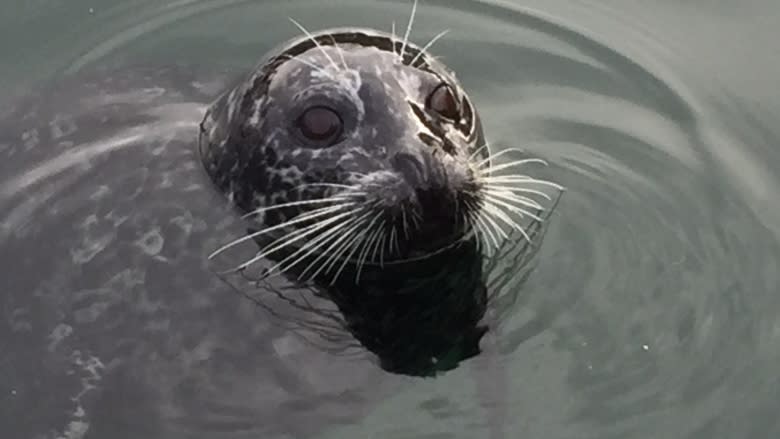Dolphin vaginas no longer a total mystery, thanks to Dal scientist

Dara Orbach is probably one of very few people in the world who regularly gets sent dolphin vaginas in the mail.
"The boxes don't usually smell very good when they arrive," says Orbach, a post-doctoral fellow at Dalhousie University and a research assistant at Mount Holyoke College in Massachusetts.
The marine mammologist has spent the last few years studying the genitals of whales, dolphins, porpoises, sea lions and seals to understand how they fit together during sex.
It's not an easy thing to do.
Simulated sex
First, she has to actually obtain the animals' vaginas and penises. Orbach has a permit to receive the reproductive organs of marine mammals that have died of natural causes after a necropsy has taken place. It has taken her years, but at its peak, her collection included about 140 specimens.
Second, she has to figure out how the penises and vaginas interact in real life when, in fact, they're lying inert and disembodied on her laboratory table.
That's where the silicone comes in.
Orbach and her colleagues — Patricia Brennan at Mount Holyoke College, Diane Kelly at the University of Massachusetts and Mauricio Solano at Tufts University — figured out how to fill a bottlenose dolphin's vagina with silicone to make a mold of it and understand its shape. They then froze the actual vagina, and thawed it right before simulated sex.
Next, they inflated a dolphin's penis and fixed it with chemicals to preserve it and make it rigid.
After that, they used CT scans of both the individual organs and the two together to understand exactly how the organs fit.
Vaginas complex, diverse
"It's not really surprising that the penis fits in the vagina," Orbach says. "We know that copulation is the most direct possible interaction between a male and female."
What was surprising was the variety of complexity in the vaginas.
Marine mammal penises have long been studied by researchers. It was already known, for example, that dolphin penises are constantly semi-erect. But vaginas have, for perhaps obvious reasons, been more difficult to examine. Orbach's work changed that.
"In the typical mammalian vagina, there's nothing between the clitoris and the cervix. There are no other structures along the way. But then you open up a sperm whale and you might find 40 of these vaginal folds. You open up a bottlenose dolphin, you might find only one. So there's a huge and incredible variation that hadn't really been documented before."
The purpose of those vaginal folds is a question Orbach still hasn't definitively answered.
It's possible that some folds prevent seawater, which is lethal to sperm, from entering the reproductive tract. It's also conceivable that they store sperm or expel unwanted sperm.
Choosing dolphin dads?
The folds create a sort of obstacle course that the penis and sperm must navigate in order to fertilize the egg. That's just one of the ways that the female may be able to control which male becomes a dolphin daddy.
"The female can potentially adjust her body slightly just before or during the copulation, and that would force the male's penis to be diverted into a blind-end sac or not quite aligned very well, so she might have the ability to control paternity by body movement and body positioning," Orbach said.
The researchers' work led them to a better understanding of which positions may be more likely to lead to insemination for different species.
Conversation piece
The big question everyone asks Orbach is "why?" Why do you want to study the genitals and copulation of marine mammals?
Her answer: "Who doesn't?"
When she tells strangers what she does for a living, they are universally fascinated, she says.
"I feel like I'm both a conversation starter and a conversation stopper because as soon as I tell people what I do, that's the end of any other conversation that was happening. I've never had anyone say, 'Oooh, that's gross.' People seem to be really, really intrigued."
They were, indeed, intrigued when she presented some of her findings to a meeting of the American Association of Anatomists in Chicago last weekend. She has been swamped with media interviews ever since.
Basic science important
While Orbach believes her work could help with species conservation and artificial insemination someday, she says understanding animals on a basic, anatomical level is also important.
Orbach says the biggest challenge she faces is trying to help people understand why that basic science matters.
"I feel that a lot of people think that science should only be important if it can be applied somehow towards either making money or towards helping to save lives. It feels often like a struggle to explain to people why understanding the basic foundational sciences are also equally critical.
"Why should we only understand something if it benefits humans? Why is it not important to understand all of life?"


